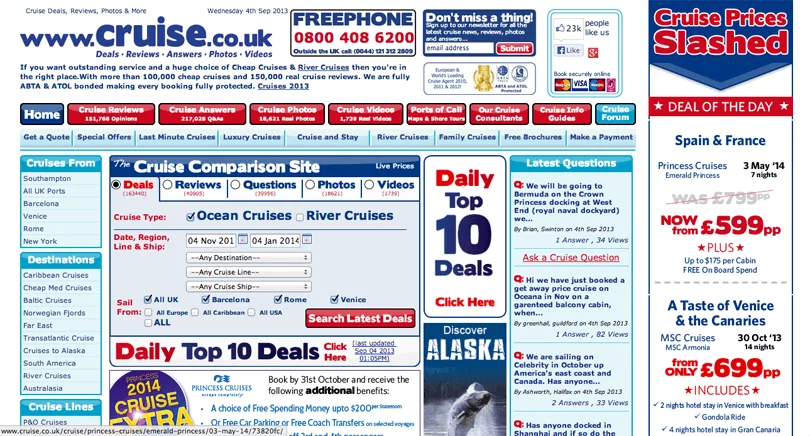At Zuko we are the web form optimization specialists. We see thousands of forms coming through our form analytics platform every year, so we have a pretty good idea of best practice to reduce basket abandonment and improve form conversion rate.
Of course, every form is different in some way so there is not a universal silver bullet, but here are our best tips and advice to optimize your form performance:
There’s nothing worse than leaving guaranteed money on the table. That’s what happens every time someone takes the time to fill out your form, clicks on submit and yet still doesn’t manage to get through to completion.
So, when you use your Form Analytics tool (we obviously recommend Zuko, but other tools are available) to examine your checkout or form performance, always look first at people who have tried to submit but ended up abandoning. Search for the answers to questions like:
This analysis will help you identify what has prevented these users from successfully completing the form and make the changes needed to allow you to pick that low hanging fruit next time around.
We’ve discussed how to use inline validation before but it remains one of the most powerful tools in your arsenal. There is nothing more frustrating for a user to have to “pogostick” up and down your form, trying to find out where they have gone wrong.
Just tell them immediately when their answer will not be accepted and you’ll have a much happier user. This classic article demonstrated how powerful inline validation can be, driving:

By the time someone makes it to your form they are usually primed and ready to buy. Don’t clutter their journey with visual noise and options to click somewhere else. Make it clean and as simple as possible for them to reach the end goal.


We’ve all had horror error messages that confuse more than help.
This one, for example, provides a big fat red X with no indication on how to fix it:

If used well, error messages can be your friend, guiding the user gently to completion rather than driving them off in a fit of frustration. General principles to make your error messaging better include:
To read up on this topic in more detail, check out our guide to using error messages correctly.
Passwords consistently come up in polls as one of the biggest annoyances in modern life, let alone within a web form, so it is essential you are not putting users off unnecessarily through excessive password stipulations. Even in the best performing forms that we see coming through Zuko, 30% of users have to return to the password field at least once.
You should read our blog on how to stop passwords causing users to abandon your form but the TLDR is:
It’s tempting isn’t it. You have a finite list of possible answers but it is too long to create radio options in your form. Why not stick it in a drop down?
Sometimes this may be the best form design solution, but not always - especially if the bulk of your users are on mobile devices. Who wants to scroll through a list of 100 years to set their birth date or 195 countries to get to their one?
Always think hard before you inflict a dropdown on your users, it may well cause them to attrite out of frustration. Be sure to check out our article on drop downs for more on the difficulties of drop downs and the possible alternatives you can use.

The counterpart to error messages, microcopy is best used to bring clarity to the user on why you need this information and why they should provide it. Done well, it is unobtrusive and can increase your conversion rate with the minimum of effort.
Common uses for microcopy are:

Phone Numbers. Postcodes. Card Numbers.
Across all the forms we see, these fields consistently create a higher degree of unnecessary friction and abandonment than almost any other.
Why? People know their own phone number and postcode don’t they? And they should be able to read their card number easily?
Indeed.
The problem does not lie with the user but the form.
How many times have you tried to enter your phone number but been told to add the international dialling code. Or not add the international dialling code. To remove the “0” from the start of your number. Or not.
Or perhaps you have had your credit card rejected because you used spaces when filling in the form.
All of these fields have inputs that can be rendered in multiple formats, all of them correct. Yet businesses persist in insisting that users shoehorn inputs into an arrangement that suits the form and punishes the user if they deviate from the prescribed template.
Of course, this issue can be mitigated through good error messages and microcopy but why not go further than that? Accept any valid rendering of the input and do the formatting at the back end to provide a smooth user experience.
Numerous research studies consistently show that one of the best nudges to push people to committing to a decision (in this case, to fill out your form) is to demonstrate that others have already gone down that path so it is not as big a risk as they may think.
You may reckon it trivial, but it seems that humans are evolutionally hard-wired to follow the crowd so why not harness that instinct to improve your conversion rate.
Whether it is testimonials, customer reviews, client logos, trust badges, social media, industry awards or customer number data, giving the user social proof should have a positive impact on the numbers successfully coming through your form, in some cases up to 400% improvement!
Another psychological tip here. Humans seem to be instinctively primed to need to complete what we start (it’s called the Zeigarnik effect for you armchair psychologists out there). So, if your data shows that you have a low starting rate for your form, try to tempt in the visitor by only asking for a small piece of information at first - an email for example. It will vastly increase the chance that they complete the rest of your form.
Progress bars can deliver a strong psychological boost to your form conversion, reducing user anxiety and prodding them towards the completion line.
They combine well with point 10 above, harnessing the compulsion to finish what has been started. We’ve posted previously about the possible ways to utilise progress bars but the key points are:
This one is a more advanced tip and does rely on you having a form analytics solution that supports detailed audience segmentation, such as Zuko’s custom attributes feature.
We get many Zuko customers coming to us with a completion rate that has plummeted and they don’t know why. They are often worried about their form but it isn’t necessarily a form problem, but an audience problem. They have kicked off a shiny new marketing campaign but have succeeded in driving a bunch of tyre kickers to their form who have no intention of completing and who have driven the average conversion rate down.
This is where segmentation comes in. If you can use your form analytics to break out each audience, you can understand where your traffic has come from and analyse each group individually. Your marketing campaign may have driven poor converters, while your core organic visitors may hold up well, or even started to convert at better rates due to the marketing or form changes.
Once you have that data you can go even deeper. Different groups often abandon on different fields or in response to different copy. Segmenting the data allows you to optimise your form for each audience, leading to a larger overall conversion volume. For more details on advanced segmentations you can download and read Zuko's Guide to using Data to Optimize Forms.
We’ve given you some advice to increase your form conversion but now it is your turn to test your own form or checkout and work out what you need to do to reduce basket abandonment and improve performance.
Begin with a free trial using an analytics tool like Zuko. You can get some quick and easy insights which will point you in the right direction before you decide whether to dig deeper.
Find out more by segmenting your data, understanding how different audiences behave in your form and establish what the key blockers are.
Once you have worked up your hypotheses, make the changes and see what the effect is. Better still, use an A/B testing tool like Google Optimize, Optimizely, or Convert (Zuko has integrations with each) to trial a form variant and be sure if it is improving performance before rolling it out to everyone. Your conversion rate should go up as you test and tweak.
Improving web form and checkout conversion shouldn’t be too hard with the right data. Here’s the rundown if you need a handy checklist to follow:
Use these tips to boost your form conversion rates or reduce basket abandonment, optimising the most important part of your conversion funnel.
For even more tips check out Zuko's comprehensive Guide to Form Optimization and Analytics.
If you're improving an eCommerce site you should also read our equivalent article on optimizing an eCommerce checkout.
If you need any more help then feel free to contact us at sales@zuko.io


Zuko is the most powerful form analytics platform available on the market. Find out how to improve your form and checkout conversion by taking a product tour.
PRODUCT TOUR